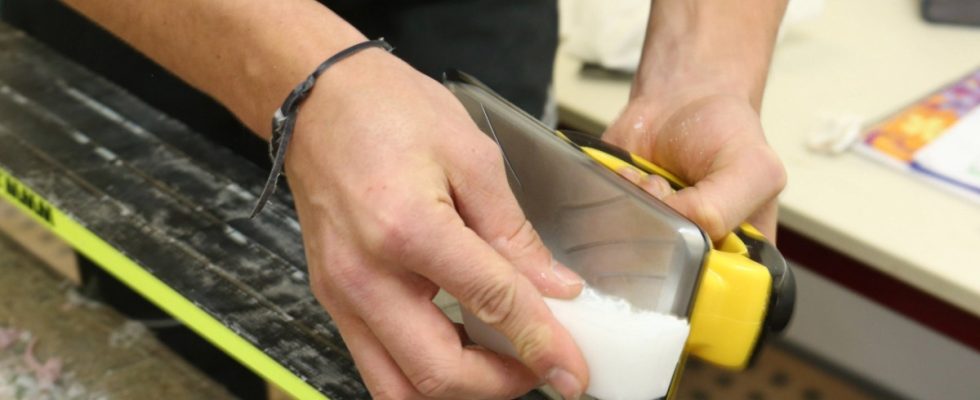If anyone knows how to wax skis properly, it’s Adi Klier. The 84-year-old has had his ski workshop on the market square in the Upper Bavarian village of Neubeuern for 50 years. He used to be a racing driver himself, and later he prepared, as he puts it, the skis of Hansi Hinterseer and Franz Klemm, among others, in the World Cup. He still works in his ski workshop from Monday to Saturday.
The best thing, of course, is to have him prepare your skis for you. But if you don’t need the surface repaired or the edges sanded, but just want to wax, you can do it yourself at home with simple tools, says Klier: “But of course wax warm, that’s the be-all and end-all!”
If it smokes heavily, it is too hot
You need: an old iron or your own small wax iron (around 60 euros), a plastic scraper blade, a sturdy nylon brush (or, tip Klier: a Glitzi dishwashing sponge) and of course wax in block form. For beginners, the master recommends a universal wax that covers a wide temperature range from severe minus to slightly plus degrees.
Place the skis over two work stands. Set the iron to a low to medium temperature and turn off the steam function. Clean the surface with a cloth and a little alcohol. Point the tip of the iron downwards and hold it over the covering. Press the wax block against the iron with one corner. If it smokes heavily, it is too hot. The wax should drip, not run! From the tip of the ski to the end you ski a giant slalom with wax and iron, i.e. in a gentle zigzag through the air above the surface. A trace is enough, just not too much wax, advises Klier. Because you have to scrape most of it back down later anyway. Once the drops of wax have been distributed, iron over the covering several times with a constant movement to distribute the wax evenly. “It’s so good for the ski, you can really tell, it absorbs it,” says Klier.
Now let the skis and wax cool for ten to 15 minutes. But wait: you should peel off the edges straight away while the wax is still warm, using the corner of the scraper blade; there is usually a recess for this. The cold wax layer is then scraped off vigorously in the sliding direction from the tip of the ski to the end until the last white wax flake falls to the ground. “We only need the wax in the surface, not on it,” says Klier. Last, very important step: Use the wax brush or the rough side of the Glitzi sponge to brush from tip to end, four or five times. “This exposes the fine grooves of the surface again,” explains Klier. Together with the wax, this is essential for the gliding ability of the ski. Because you don’t drive on snow, but on a thin film of water, which is better drained from front to back by grooves and wax. How often should you wax, Master Klier? “Always before you go skiing on the weekend – there’s nothing wrong with that!”
The author plans to wax his skis more than once per season.
(Photo: Bernd Schifferdecker (illustration))

